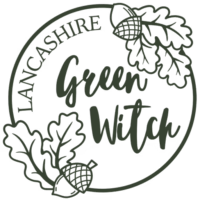How to Build a Litha Altar for the Summer Solstice
The Sabbat of Litha, also known as the Summer Solstice, marks the longest day of the year. It’s a celebration of the sun at its peak, the earth in full bloom, and the abundance of life and energy that surrounds us. One of the most powerful and symbolic ways to honour this turning point on the Wheel of the Year is by building a seasonal altar.
A Litha altar acts as a magical focal point—a space to reflect, set intentions, and celebrate the power of the sun. Whether you keep your practice simple or like to work with lots of elements, this guide will help you create a meaningful and beautiful altar for your midsummer celebrations.
Why Build a Litha Altar?
An altar is more than decoration—it’s a dedicated space to connect with the energy of the season and anchor your rituals and intentions. At Litha, that energy is fire, growth, strength, and joy. The altar becomes a mirror of the outer world: vibrant, powerful, and alive with possibility.
What to Include on Your Litha Altar
Here’s how I build my own Litha altar, using items that symbolise solar energy, abundance, and the fertile power of summer.
1. Candles in Solar Colours
Start with a candle to represent the sun itself. Gold, orange, and red are traditional, symbolising vitality and transformation. The Litha Ritual Candle Kit is a great seasonal option for this.
Light your candle during ritual or meditation to honour the sun’s strength and call in its energy for confidence, success, or clarity.
2. Solar Symbols and Representations of the Sun
Include items that evoke the sun directly. This could be:
-
A sun plaque, sun wheel, or solar pendant
-
Bright gold fabric or altar cloth
-
A mirror or metallic object that reflects light
-
Crystals like citrine, sunstone, or amber
These act as energetic anchors, connecting your altar to the light and warmth of the solstice.
3. Fresh Fruits and Natural Abundance
Place seasonal fruits such as strawberries, cherries, peaches, or sliced oranges on your altar. These represent the sweetness of summer, gratitude, and the joy of earthly pleasures.
You can also include a small bowl of honey, which symbolises prosperity, nourishment, and offerings to the spirits of the land.
4. Vibrant Flowers and Wild Herbs
Litha is a floral festival, and fresh blooms bring life and beauty to your altar. Use what’s growing near you—roses, daisies, calendula, lavender, wildflowers.
Herbs to include:
-
Lavender – for peace and protection
-
Rosemary – for clarity and strength
-
St John’s Wort – for blessing and solar magic
Anoint your altar or tools with a few drops of Litha Altar Oil to enhance their energy and bring cohesion to the space.
5. Offerings and Intentions
Your altar is a place for exchange—between you and the season, the sun, the land, or your spirits. You might leave:
-
A coin or seed to symbolise future harvest
-
A written prayer or affirmation
-
A drop of honey or a pinch of herbs as a fae or land offering
This act of gratitude deepens the relationship between you and the natural world.
Where to Set It Up
Your altar can be:
-
On a small table or shelf indoors
-
Outside on a flat stone, garden bench, or tree stump
-
Temporary (just for your ritual), or left up for a week or more
Let sunlight touch it if possible—even just for a short while during the day. Natural light activates and blesses the space.
Final Touches
Dress yourself in bright colours, play seasonal music, or add ribbons and garlands to the altar space for a festive touch. Whether simple or elaborate, your altar should reflect your energy and intention.
For handmade oils, candles, and seasonal ritual tools to support your practice, browse my Etsy shop or take a look at the Litha collection on my website.
Discover more from Lancs Green Witch
Subscribe to get the latest posts sent to your email.




